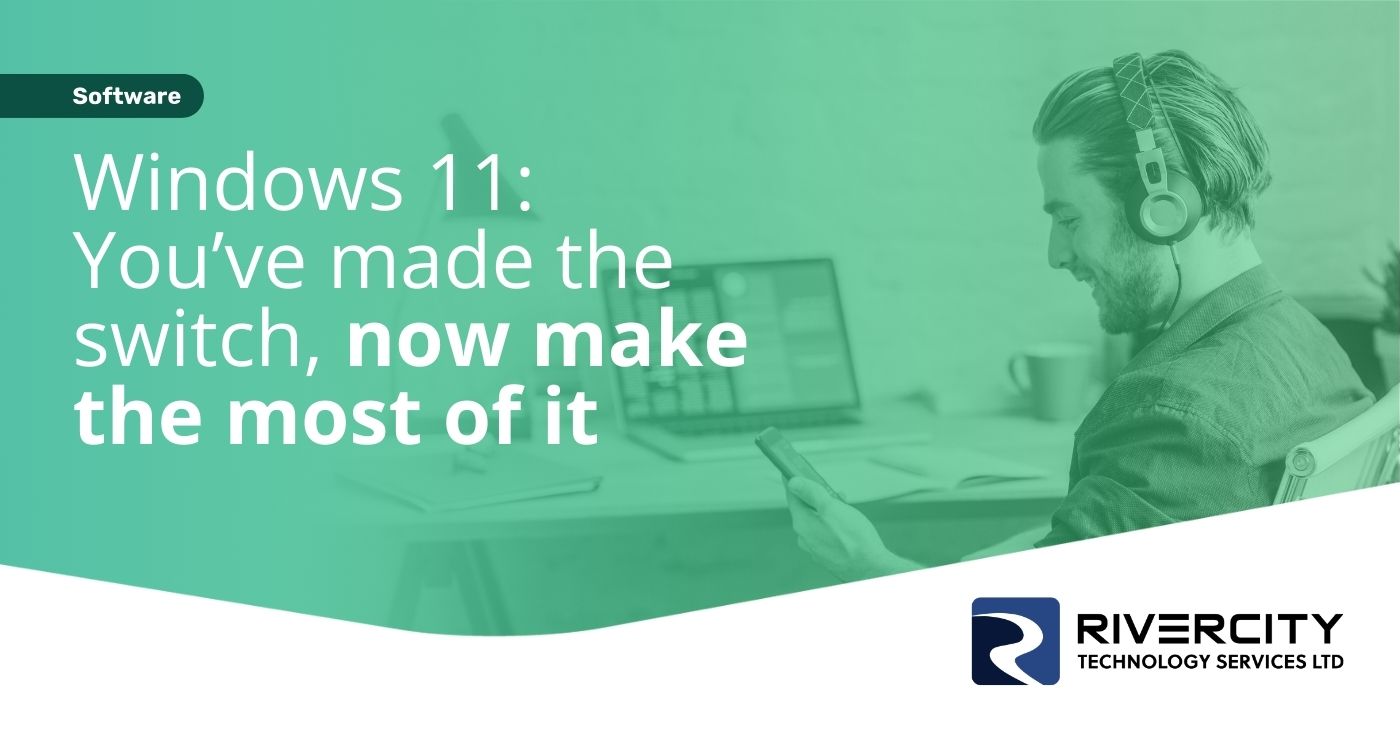Every day, they juggle dozens of files. Client briefs, design drafts, invoices, contracts, you name it.
Some are stored on her laptop. Others live in someone’s Dropbox. A few are flying around in emails with names like Final-Final-v3-DESIGN-FIXED-FORREAL.docx.
When a client calls to ask for an update, there’s a scramble. Who’s got the latest version? Has it been approved? Did someone already send it?
She spends hours each week chasing files, double-checking edits, and trying to work out who did what and when. Her team gets frustrated. Deadlines slip. And Jen ends up working late… again.
Here’s the thing: None of this is necessary.
There’s a better way to organize, share, and collaborate on your business’s files. And it’s already part of your Microsoft 365 subscription.
It's called SharePoint.
What is SharePoint?
Like most business owners, your files are probably scattered in a few different places. Some live on your laptop. Some are in a shared folder on the office server. Others are floating around in email threads or saved in someone’s Dropbox or OneDrive.
But when everything is spread out like this, it can be hard to stay organized. People waste time searching for the right file. Two people accidentally work on different versions of the same document. You’re never quite sure who last updated something.
This is where SharePoint comes in.
SharePoint is a tool from Microsoft that gives your business one central place to store, organize and share documents. Think of it like a digital file cabinet - one that’s always tidy, easy to search, and accessible to the right people wherever they are.
It works in the cloud, which means your files aren’t tied to one device or office. Your team can get what they need whether they’re at their desk, working from home, or meeting a client. If they have an internet connection and permission to access it, they’re good to go.
One of the biggest advantages of SharePoint is that everyone sees the same version of a file. There’s no guesswork about which copy is the latest, or whether someone’s made changes you don’t know about. You can even have several people working on the same document at once. No emailing back and forth, no messy overlaps.
And SharePoint isn’t just for documents. You can use it to create internal pages for your business, like a staff handbook, a company newsfeed, or a place to share policies and procedures. Everything is kept in one organized, secure place.
If you already use Microsoft 365, the package that includes Word, Excel, Outlook, and Teams, you most likely already have SharePoint. You might not have used it yet or even realized it’s there. But once you understand what it can do, you may wonder how you ever managed without it.
At its heart, SharePoint is about helping your team work better together. It saves time, reduces confusion, and brings more structure to your day-to-day operations.
The everyday benefits for your business
Imagine walking into your office one morning and instantly finding every file, document, or bit of information you need, without having to dig through emails or message someone to ask, “Where did we save that again?”
That’s what working with SharePoint can feel like. It brings order to the usual chaos of running a business.
Time is tight. You and your team are juggling multiple tasks, switching between clients, chasing deadlines. The last thing you need is to waste precious minutes searching for a file, checking if it’s the right version, or trying to remember who made the last update.
With SharePoint, that frustration goes away. Everything is stored in one place. Everyone knows where to find things. And you can open a document knowing it’s the latest version, not an old one someone emailed weeks ago.
It also makes teamwork much smoother. Instead of emailing files back and forth, your team can work on documents together, in real time. You can see changes as they happen and leave comments right there in the document. There’s no confusion about what’s been done or who needs to do what next.
SharePoint helps your business stay consistent, too. When your staff all use the same templates, checklists, or policies, things run more smoothly. No one’s guessing where to find the company vacation policy or the latest sales presentation. It’s all in SharePoint, and it’s all up to date.
Security is built in. You control who can see or edit each folder or document. If you only want your management team to view certain financial files, that’s easy to set up. And if someone leaves the company, you can remove their access straight away.
It’s these small, everyday improvements that make the biggest difference. Things become a bit more organized, a bit more secure, and a whole lot easier to manage.
How SharePoint works behind the scenes
You don’t need to be technical to use SharePoint, but it helps to understand a few basics about how it works. That way, you can start to picture how it might fit into your business.
At the heart of SharePoint is a simple idea: One organized place where your business can store and share information.
But instead of being just a folder with files, SharePoint works more like a website your team can use every day.
When you set up SharePoint, you create a site, which is really a collection of pages, documents, and tools, all designed around how your business works. You might have one site for the whole company, or separate sites for different teams, like Sales, HR, or Projects.
Inside each site, you’ll find document libraries. These are areas where you can store files. A bit like folders on your computer, but with more flexibility. You can search by name, date, person, or even by custom tags you create. You can also set up rules, like asking staff to fill in a quick form before uploading certain types of files (for example, a client name or job number).
There are also lists, which are like simple databases or spreadsheets, built right into SharePoint. You could use a list to track customer enquiries, manage tasks, or keep a register of company equipment, all inside the same system.
What makes SharePoint especially powerful is how it connects with the other tools you already use. If you use Microsoft Teams, for example, the files you share there are stored in SharePoint, even if you didn’t realize it. When you open a Word or Excel file from your Teams chat, that’s SharePoint doing the heavy lifting behind the scenes.
It also connects with OneDrive, which is your personal cloud storage. If you’ve ever saved a document to OneDrive and shared it with someone, SharePoint works in a similar way, but for the whole team, not just one person.
And because SharePoint is part of Microsoft 365, it’s tightly linked with Word, Excel, Outlook, and PowerPoint. You can open a file from SharePoint straight into Word, edit it, and your changes are saved automatically for everyone else to see. No more downloading, saving, or re-uploading.
All this might sound a bit complex at first. But once it’s set up properly, usually with help from an IT support partner (like us), using SharePoint day-to-day feels natural. It’s just a smarter, more connected way to handle the files and information your business runs on.
Real-life use cases
It’s one thing to understand what SharePoint is, but it’s even more useful to see how it can work in a real business like yours.
An intranet that keeps everyone on the same page
Many businesses rely on word of mouth, emails, or a few old files to share things like HR policies, vacation request forms, or company news. Over time, those files get lost or outdated. And new staff are left guessing.
With SharePoint, you can create a simple internal website for your team. It can include key documents like your staff handbook, health and safety procedures, company updates, and even a calendar with upcoming events. Everyone knows where to look, and you only need to update things in one place.
Project sites that keep work on track
If your business runs projects, for clients or for internal work, SharePoint makes it easy to stay organized. You can create a site just for that project, with a place for documents, meeting notes, task lists, and timelines. Everyone involved knows where to find what they need.
For example, a construction firm might create a SharePoint site for each building project, storing blueprints, contractor contact details, risk assessments, and progress photos. Everything is in one place, and nothing gets lost in someone's inbox.
Sharing documents with clients or partners
Let’s say you regularly send files to clients, like proposals, contracts, or reports. Instead of emailing attachments back and forth (and wondering which version they have), you can set up a shared folder in SharePoint. Your client gets a secure link and can view or download the latest version any time.
You stay in control. You can decide whether they’re allowed to edit the file, leave comments, or just read it. And when the project ends, you can remove access with a couple of clicks.
Handling staff requests and admin tasks
Some businesses use SharePoint to make internal admin easier. You can create simple forms for things like vacation requests, expenses, equipment bookings, or even staff feedback.
Instead of printing out a form or sending another email, your team just fills it in online, and the right person gets notified automatically.
It’s these kinds of small improvements that save time every day and reduce the mental load on you and your team. You don’t need fancy systems or expensive software. SharePoint gives you the tools to create simple, flexible systems that work for the way your business runs.
Security, permissions, peace of mind
When it comes to your business documents, especially the sensitive ones, security is just as important as convenience.
SharePoint helps you do both. It keeps everything organized and easy to access for the right people, and safely out of reach for everyone else.
Let’s say you’ve got company accounts, HR documents, and client contracts all stored in SharePoint. You don’t want every employee to see everything. With SharePoint, you can control exactly who can view, edit, or manage each area. Your sales team can see the latest pricing sheets, but not the payroll. Your admin staff can update templates but not change contracts.
It’s all done through permissions, which are just rules about who has access to what. These can be set by an individual person, by a team, or by a role. However ,your business works.
And the best part? You don’t need to worry about people accidentally deleting or overwriting important documents. SharePoint keeps a version history of every file, so you can always go back to an earlier version if something goes wrong.
It also protects your files if someone leaves the company. Instead of worrying about who still has access to what, your IT support partner can simply remove that person’s Microsoft 365 account, and their access to SharePoint is cut off immediately. You stay in full control, with no loose ends.
Because SharePoint is part of Microsoft 365, you also get all the extra security Microsoft builds into its platform. That includes automatic backups, encryption (which keeps your data safe if someone intercepts it), and threat detection (which helps spot anything unusual, like suspicious logins).
And don’t worry about accidentally sharing something you shouldn’t. If someone tries to email a confidential file or share a sensitive folder outside the business, Microsoft 365 can alert you, or even block it, depending on the settings you’ve chosen.
Common pitfalls (and how to avoid them)
Like any powerful tool, SharePoint works best when it’s used the right way. If you don’t take the time to set things up properly at the start, things can quickly get messy. And that defeats the whole point of using it.
Mistake 1: Dumping everything into one big folder
It can be tempting to upload all your existing files into SharePoint in one go, just to get them off your desktop or server. But if you don’t think about how things are organized first, you’ll just end up with a digital version of that overstuffed file cabinet. The one where no one can find anything.
The fix
Before you upload, it’s worth planning out some simple structure. Think in terms of teams, projects, or departments. Create separate spaces for different types of information. That way, everyone knows where to look, and more importantly, where to save new files in future.
Mistake 2: Giving everyone access to everything
Another common issue is setting permissions too loosely. If every team member can see every document, you’re increasing the risk of mistakes or sensitive information being shared by accident.
The Fix
It’s better to set clear boundaries. Decide who needs access to which parts of your SharePoint setup and only give them what they need. Your IT support partner can help with this if you’re not sure how to manage it.
Mistake 3: Not training your team
SharePoint is easy to use once you get the hang of it. But for someone who’s never used it before, it can feel a little unfamiliar. If you don’t take the time to show your team how it works, they might go back to old habits, like saving files on their desktop or emailing attachments back and forth.
The Fix
A short training session, or even a few simple how-to guides, can make a big difference. Once your team sees how much easier it makes their day, they’ll start using it properly.
Mistake 4: Trying to do too much at once
SharePoint can do a lot. But that doesn’t mean you have to use every feature from day one. The most successful rollouts start small. Maybe with just a shared folder for company templates or a central space for HR documents. Once your team gets comfortable, you can gradually add more.
The fix
By taking a bit of time to plan things properly, you can avoid these common headaches and get the most out of what SharePoint has to offer. The goal is to make things simpler, smarter, and more secure.
So, is SharePoint right for you? If you want a smarter, more secure way to organize your business information, and a more professional way for your team to work together, the answer is probably yes.
Whether you’re ready to roll it out across your company or you just want to dip your toe in with a small project or team, we’d love to help you get started. We’re here to help. Get in touch.






















